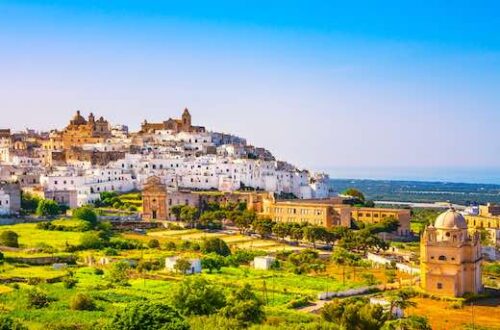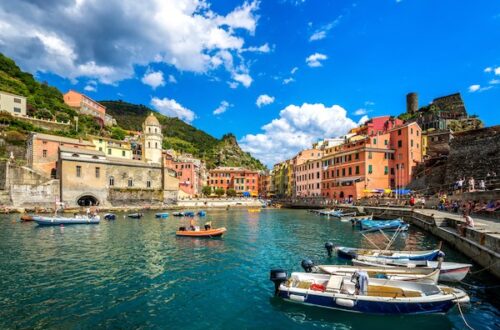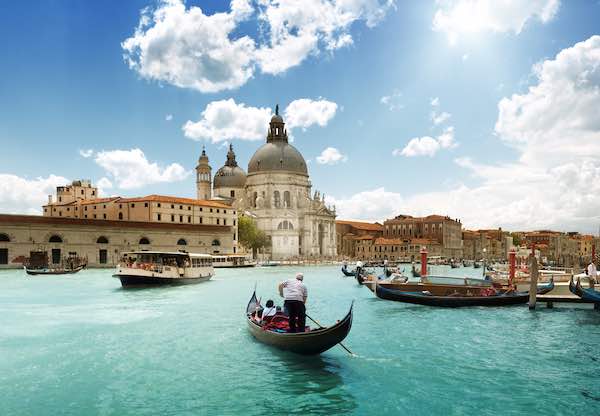
How to get around Venice as a family: essential travel guide for first-time visitors
How to get around Venice: an essential and practical travel guide about moving around Venice, including an overview of the Venice public transport system, vaporetto pass and more.
What is the best way to explore a city on water?
When visiting a new city, one of the hardest things to figure out is how to get from one place to the other.
This is particularly true in Venice, Italy, because the city adds to the stress of city travel an extra twist: waterways!
Venice is unique regarding mobility: built on a lagoon, the city street network is a mix of normal streets and piazzas and waterways.
It is also almost entirely car-free, so you will not find taxis or standard buses here.
So, how is the visitor meant to explore it?
Thankfully, exploring Venice is not as hard as it may seem at first glance.
You just need to know how it works, which is what this guide is about!
In this article, we look at how to get around Venice, how the Venice public transport system works and also at public transport passes.
By the end of this travel guide, I hope you will have all the info you need to decide what the best way to get around Venice is for you and your family.
Please note: this post contains affiliate links. Should you make a purchase through them, we might make a small commission at no extra cost to you.
Getting around Venice: essential vocabulary and Venice addresses format
Before we dig deep into the get way to get around Venice, it is useful to familiarize yourself with some terms that are specific to the city.
They will come in handy to decipher the exact address of your accommodation (or the attraction you want to visit) so that you can make the best decision about how to get there.
Alilaguna = the provider of water transport services connecting Marco Polo Airport to Venice
Ca’ = Casa = house/ palazzo You will find the word Ca’ in the name of your accommodation, main landmarks and public transport stops. Examples: Ca’ D’Oro, Ca’ Foscari etc
Calle = street. This is the equivalent of Via or Vicolo in other cities. Smaller ones may also be known as calletta or callesella and you find names such as Calle Larga (lit Large street) or Calle Lunga (Long street)
Campo = piazza In Venice, there is technically only one piazza, Piazza San Marco. All the other piazze are called campo! A small Venetian Piazza is called Campiello.
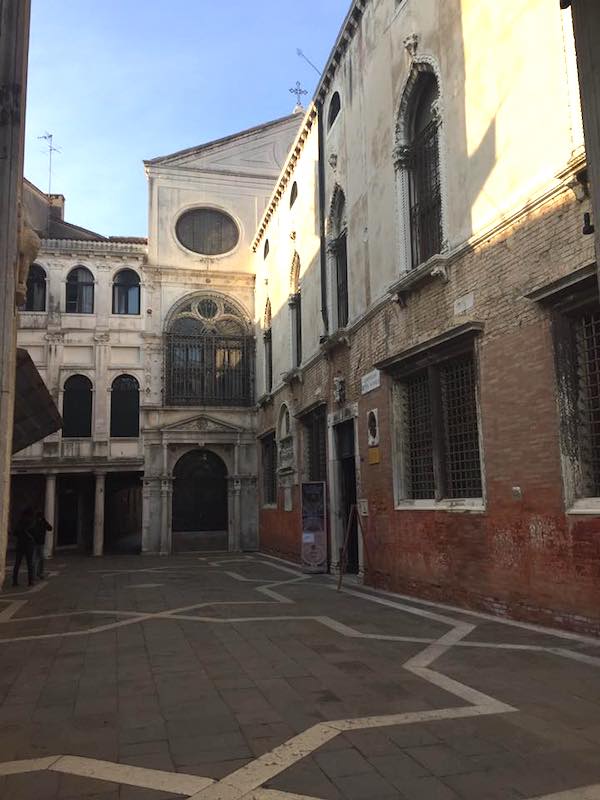
Canale = canal. Just what you think, a waterway!
Corte = an enclosed ‘campo’ or piazza
Fondamenta = lit Faoundations. These are roads along canals. When you walk along fondamenta, you walk along water: they may or may not be fenced (usually not)
Gondola = you know this one! Gondolas are traditional vessels now used almost exclusively for tourist entertainment. One exception is the traghetto service (see below)
Sestriere – A sestiere is a neighborhood. This word is specific to the city of Venice (you don’t have sestieri anywhere else in Italy) and you will encounter it when looking at a Venetian address.
Find here >>> our guide to Venice sestieri
Taxi Acquatico = a water taxi, aka a speed boat offering a taxi service for a (high) fee
Traghetto = in the rest of Italy a traghetto is a ferry, but not in Venice! In Venice, a traghetto is a gondola connecting the two opposite sides of Canal Grande in specific locations not served by bridges.

Vaporetto = water bus
Let’s see an example, using the address of a nice family hotels in Venice I like:
Example 1: Ca’ Due Leoni, Campiello della Pazienza, Cannaregio
In this example: Ca’ due Leoni is the name of the establishment; Campiello della Pazienza is the name of the little square the hotel overlooks; Sestriere Cannaregio is the neighborhood
Example 2: Hotel Palazzo Veneziano, Fondamenta Zattere Al Ponte Lungo, Dorsoduro
in this example, the word ‘Fondamenta’ tells you that the hotel entrance is along a canal and you can expect to be able to dock close to it, if moving around by private boat
How to get around Venice
In this article, we look at how to get around Venice city center. If you need to make your way in from the airport, also read >>> how to get to Venice from Marco Polo Airport
Getting around Venice on foot
One of the best ways to explore Venice and my personal favorite, is going on foot, for a couple of reasons.
One is a romantic reason and stems from the fact that Venice is an open-air museum, a city with something to see at every corner, not just a handful of landmarks scattered in different locations.
If you want to see Venice, walking around and allowing yourself to getting a little lost in its many calli and campielli is the way to go!
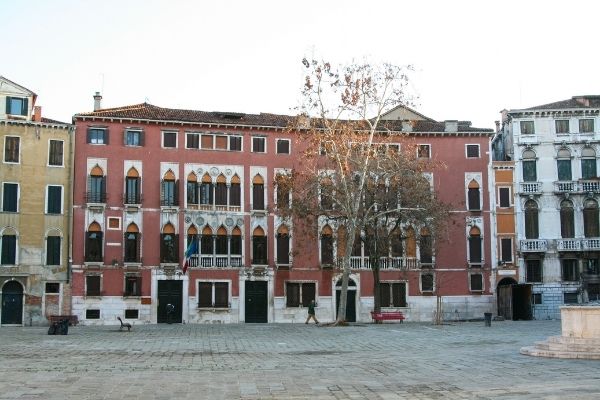
The other reason is much more practical and it has to do with the shape of Venice.
Venice is crossed by the Grand Canal, the main waterway of the city, which goes from the train station to the Island of San Giorgio, on the opposite side of the city
The grand canal is were you find most public transport services and they are great if you need to get from one end of it to the other, but they are of very little use for the vast majority of places as they are simply not on the grand canal itself!
In many cases, places are away from the Grand Canal and you can only reach them on foot or by private boat (more about it later)
A few things to know about walking in Venice:
- Walking in Venice is safe as the city is car-free and bike-free
- Walking is by far the cheapest way to explore Venice, considering the high cost of water buses and taxis
- Discovering Venice of foot will give you the maximum flexibility in terms of discovering hidden corners and pretty courtyards
However:
- Venice has many bridges and not all of them are accessible.
You will encounter steps and some of the bridges are rather steep, which can be difficult for people with mobility issues or if you are pushing a stroller.
If you are visiting with a young child, read here >>> our tips for visiting Venice with a baby
- Venice is big and you will clock in a high number of steps very quickly.
Make sure you do have comfortable shoes for your stay and evaluate carefully how much it may take to walk back home.
A pleasant walk on the way somewhere can easily become an extenuating walk back to your accommodation: always stay aware that, in Venice, you cannot flag a cab or hop on the metro as easily as in other cities!
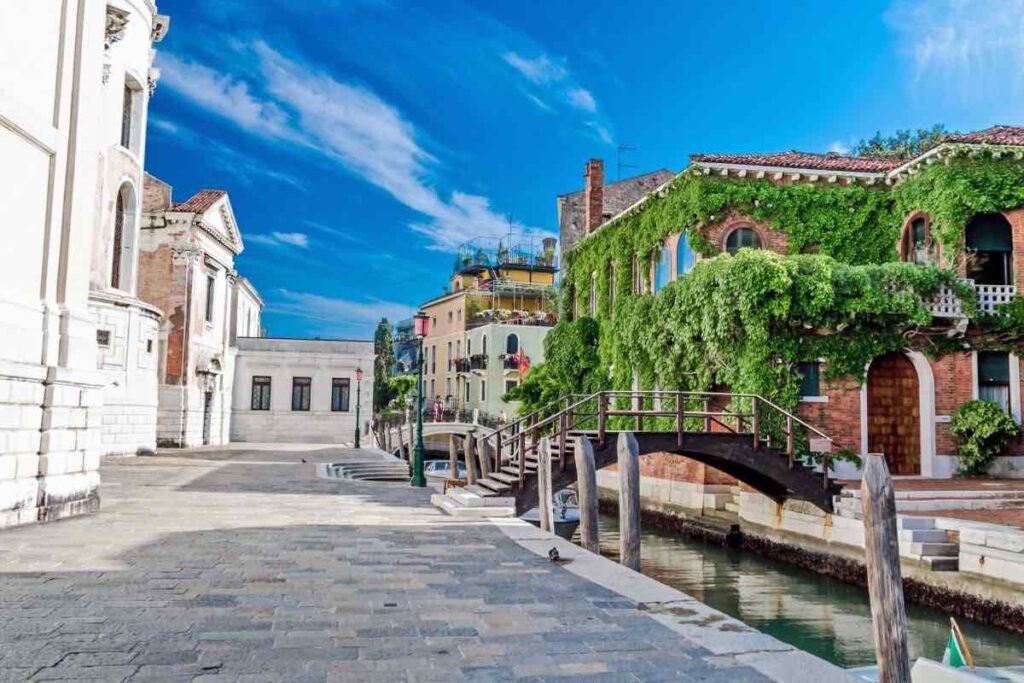
Getting around Venice by vaporetto
Vaporetto or Vaporino, as it is called by locals, is the name of the Venice water bus.
Vaporetti (plural of Vaporetto) are large-ish boats operating just like a bus does on land: they are organized in different lines with designated stops and connect distant parts of the city one to the other, just like standard buses in standard cities.
They also guarantee connections with the islands.
Vaporetti are great on long distances and chances are you will get Vaporetto at least once while in Venice.
However, how much you will use it depends on where you are staying and what your plans in Venice are.

Venice has hundreds of canals.
However, Vaporetto can only go alone the bigger ones and on the open water.
This means that to go from A to B, the Vaporetto may have to take a long way around the main Venice island, while on foot, you can take a shortcut through it.
So, when it comes to using Vaporetto in Venice, it is good to keep in mind the following:
- Vaporetto in Venice are great for long distances and essential to reaching the smaller islands etc.
- Vaporetto is exceptionally useful if you are staying along the Grand Canal but away from the main attractions, for instance, if you are staying near the station and plan on spending most of the time near San Marco.
- Vaporetto is expensive for adults but children under 6 go free. If you are traveling with children, see also >>> our guide to visiting Venice with kids
- Vaporetto is handy if you are moving around with luggage or a stroller
- Vaporetto is significantly cheaper than a water taxi
However:
- Vaporetto is not always the fastest way to reach your destination
- Some of the lines take many stops and the journey can be painfully slow
- Vaporetto is a means of transport for Venetians as well as tourists and it can get very busy
- Vaporetto is expensive
Good to know: Because of this, while you are likely to get a Vaporetto at least once in Venice, you may not use it as much as anticipated. When considering a Vaporetto pass, I really recommend looking at the map where your main places of interest are to make sure getting there by water is indeed the best option.
You can get Vaporetto tickets at ticket booths around Venice or online.
Find options on the website of the Vaporetto provider in Venice here or get a day pass on Tiqets (same cost, much easier website to use!)
Getting around Venice by water taxi
Water taxis in Venice come in the form of speedboats and they are a very fast, efficient, glamorous and exceptionally expensive way to visit the city.
Water taxis are not a standard mean of transport for locals.
Rather, they are a high budget tourist option, so while there are instances when water taxis are ideal, they are not really comparable with taxis in other cities and you are only really likely to use them on the way to / from the airport if at all.

The main things to know about using water taxis in Venice are:
- Water taxis in Venice are speed boats and are, by far, the fastest way to cover long distances
- Taxis are a great way to get to / from Marco Polo airport to your accommodation, especially if staying far from Piazzale Roma/ Santa Lucia train station.
- Venice water taxis have limited space for luggage: make sure you agree on the fee for large bags in advance.
- Taxis may not be able to bring you right to your door. However, there are so many docking areas in Venice, they are usually able to bring you very close to your destination address. If your hotel doesn’t have water taxi access, make sure you agree on a drop-off point to tell the taxi driver.
Water taxi companies in Venice you can book a ride with are:
- Consorzio Motoscafi Venezia – www.motoscafivenezia.it
- Consorzio Venezia Taxi – www.veneziataxi.it
- Venezia Turismo Società Consortile s.r.l. – www.veneziaturismo.net
- Consorzio Venice Water Taxi – www.venicewatertaxi.it
- ATI Venice One – www.serenissimataxi.it
- Consorzio Venezia Futura – www.consorzioveneziafutura.it
- Veneziana Motoscafi – www.venezianamotoscafi.it
Getting around Venice by gondola
Gondolas are not a means of transport but a traditional Venetian vessel now used for tourist rides and photo shoots. With one exception: traghetto!
While in most instances, you will not get a gondola in Venice to go from A to B, along the Grand Canal, you will notice signs pointing to a ‘traghetto’, and you will find gondolas doing exactly this: bringing people from one side of the canal to the other!
Traghetto crossing only takes a handful of minutes and costs less than a Euro per person, which you pay cash to the gondolier.
The crossing is fun, is available in areas not served by bridges and it is also a fun way to try the gondola experience without breaking the bank should you be visiting Venice on a budget.
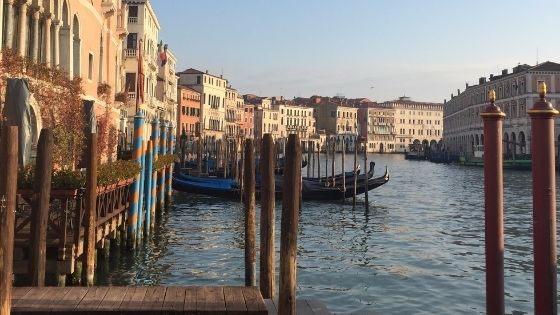
Getting around Venice by bike or scooter
Getting around Venice by bike, scooter, or similar wheeled means of transport is not an option ad bikes, and scooters are not allowed in Venice.
I hope you found this quick overview of transport options in Venice useful and it helped you plan your stay. Safe travels!
How to get around Venice – Pin this!



